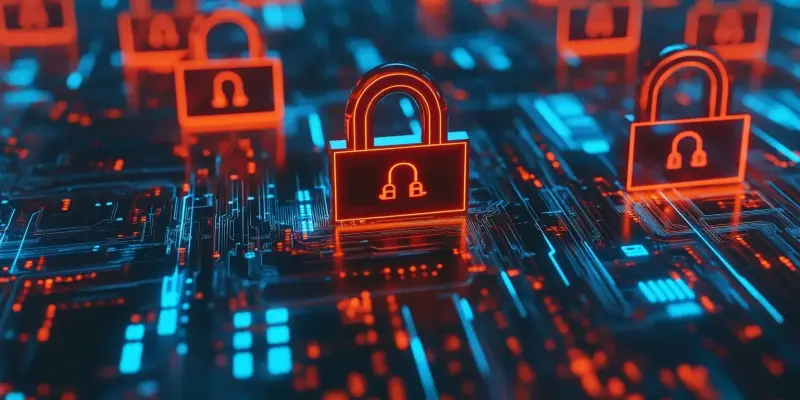The cybersecurity landscape has once again been shaken with recent developments underscoring the ever-present threat of cyberattacks. The Cybersecurity and Infrastructure Security Agency (CISA) has added three new vulnerabilities in Ivanti Endpoint Manager (EPM) to its Known Exploited Vulnerabilities (KEV) catalog. These vulnerabilities, designated as CVE-2024-13159, CVE-2024-13160, and CVE-2024-13161, present a significant risk allowing remote, unauthenticated attackers to infiltrate affected systems. This revelation has put both federal agencies and enterprises on high alert, prompting them to take immediate measures to safeguard their critical infrastructure.
A Closer Look at the Newly Discovered Vulnerabilities
Exploitation Through Path Traversal Flaws
The identified vulnerabilities are classified as absolute path traversal issues, which signify a specific type of threat within the software environment. This classification indicates a flaw that allows attackers to gain unauthorized access to sensitive information by manipulating file paths. Specifically, attackers can use these flaws to access and leak information from exploited systems, posing a serious security risk. The path traversal exploits stem from inadequate handling and validation of file paths within Ivanti EPM, enabling attackers to fetch critical files such as logs and configuration settings.
By exploiting these vulnerabilities, cybercriminals can potentially access sensitive data, which may be further used to escalate attacks across the network. The fact that remote attackers can cause damage without even needing authentication exacerbates the threat, as it broadens the scope of potential attacks. Given the criticality of information handled by endpoint management systems, the unauthorized access facilitated by these vulnerabilities can lead to significant data breaches and operational disruptions.
Consequences of Unpatched Vulnerabilities
The consequences of leaving these vulnerabilities unpatched are far-reaching. The intrinsic nature of endpoint management solutions means that they hold substantial control over all connected devices within an organization. If these systems are compromised, attackers can effectively gain control over a wide array of devices, resulting in broader network compromise. Cybersecurity experts highlight the potential for attackers to use the data gained from these exploits for further malevolent activities, such as deploying malware, initiating ransom attacks, or extracting more sensitive information.
Federal agencies, in particular, are instructed to prioritize the remediation of these vulnerabilities by March 31, 2025, emphasizing the urgency and seriousness of the situation. Failure to address these issues promptly could lead to devastating consequences, including substantial financial loss, reputational damage, and legal implications. Businesses need to recognize the gravity of the situation and commit to bolstering their defenses against such vulnerabilities.
Proactive Measures for Safeguarding Systems
Steps to Mitigate Vulnerabilities
To combat these vulnerabilities, organizations must heed Ivanti’s guidance for mitigation. It is imperative that they restrict unauthenticated access to Ivanti EPM through the use of firewalls or Virtual Private Networks (VPNs). This restriction can significantly reduce an attacker’s avenues for exploitation. Additionally, IT departments should conduct thorough audits of file access logs, looking specifically for any suspicious actions that could indicate an ongoing attack or a breach in progress.
Prompt updates and patches provided by Ivanti should be applied without delay, ensuring that the systems are shielded from known exploits. Organizations are also encouraged to implement robust security policies, including regular software updates and patches as a standard practice, to diminish the threat of vulnerabilities. An informed and proactive approach can tremendously enhance the security posture of institutions relying on Ivanti EPM.
Vigilance and Continuous Monitoring
Alongside immediate mitigation steps, continued vigilance and continuous monitoring are crucial components in maintaining a secure system environment. Cyber threats are constantly evolving, and static defense strategies may quickly become obsolete. Therefore, employing advanced monitoring tools that can provide real-time insights into system activities is essential. These tools can identify anomalies and potentially suspicious activities that could signify an attempted or successful exploitation of vulnerabilities.
Training and awareness programs for staff can also play a significant role in fortifying an organization’s cybersecurity defenses. Ensuring that personnel are knowledgeable about potential threats and the correct procedures to follow in the event of a suspicious incident can greatly reduce the risk of successful attacks. A comprehensive and integrated approach to security is vital to combat the complex and sophisticated techniques employed by today’s cybercriminals.
Key Takeaways and Future Considerations
Addressing Immediate Concerns
The recent addition of critical Ivanti Endpoint Manager vulnerabilities to the CISA’s Known Exploited Vulnerabilities catalog has drawn significant attention to the weaknesses many organizations face in their cybersecurity infrastructure. Swift action is not just recommended but essential to thwart potential exploits that could have grave implications. Organizations must follow recommended mitigation procedures, apply necessary patches, and foster a culture of vigilance to maintain the integrity and security of their systems.
Preparing for Tomorrow’s Threats
The realm of cybersecurity has once again been jolted by recent events that emphasize the constant danger posed by cyber threats. The continuous evolution of cyber threats necessitates an unwavering commitment to security improvements and proactive defense mechanisms. Organizations now face increased pressure to prioritize cybersecurity, ensuring that they stay ahead of potential exploits and maintain the integrity of their operational environments.

